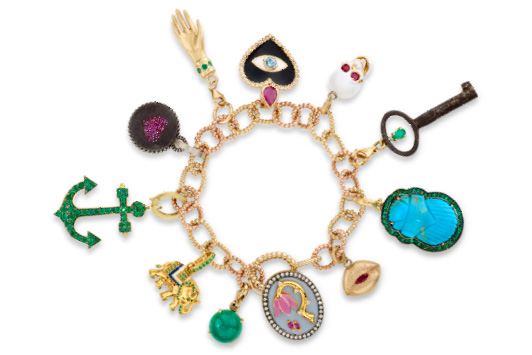
While many in the industry struggle to find young consumers to buy jewelry, Eric Braunwart struggles to keep up with demand. That’s because his firm, Columbia Gem House, has a plethora of young clients — particularly female jewelry makers 35 and under — clamoring to collect his fair-trade gems.
A pioneer in the ethical- and sustainable-sourcing arena, the company provides guarantees of the gems’ integrity and the well-being of those who mine them at sites worldwide.
“Fair trade is a growing market for sales,” says Braunwart. “Seeing how many traditional retailers are closing their doors reinforces the idea that the industry needs to think differently about this segment.”
Indeed, the industry is still grappling with the concept that emerging collectors want to support companies with ethically and sustainably motivated practices. In 2017, the total number of jewelry-related businesses continued to contract, dropping 4%, according to data from the Jewelers Board of Trade (JBT). Meanwhile, an oft-cited 2015 Nielsen study reveals that sustainability drove 72% of purchasing decisions that year among millennials, who will soon comprise the bulk of the US workforce.
The challenge to the trade? Staying relevant and offering merchandise that appeals to the growing economic power of this future majority.
A good start for jewelers is to educate themselves about sourcing issues so they can guide customers and work with the right industry partners. Those who truly care about bettering communities may have the best success.
“I don’t want to just make money — I have a sincere desire to improve people’s lives,” says Sheahan Stephens of Sheahan Stephens Sapphires, who travels to Sri Lanka every six weeks to ensure artisanal sapphire miners have employment.
Meanwhile, Simon Watt of Kentucky-based gemstone dealer Mayer & Watt, who recently started selling emeralds, spent a lot of time fact-checking sources and claims. Before imports commenced, he hopped on a plane to the African country.
“I had to see the operation for myself and get validation for each step of the process,” he explains. In seven months of business with the stones, he’s already sold 10 kilograms of rough.
A clean supply chain
Of course, there are obstacles to responsible sourcing efforts. These include a lack of structure in third-world countries, limited time for understanding different cultures and nurturing relationships, and the high cost of traveling to the sources and tracking steps in the supply chain. Corruption is a problem as well: Braunwart recently lost a mine lease in Africa to another buyer who agreed to pay a bribe — something that “doesn’t meet our protocols,” he says.
A clean supply chain has several telltale signs: It’s short, limiting the number of steps from mine to market; it’s transparent, with each step clearly labeled; and it has a structure with protocols for human safety, environmental sustainability, and product integrity.
Gemstone producer Greenland Ruby is working to become a certified member of the Responsible Jewellery Council (RJC), because it “can guarantee the origin of materials,” says Hayley Henning, vice president of sales and marketing for the ruby and sapphire miner. That said, there are many ethical firms that do not have RJC membership, including Braunwart’s, Stephens’s and Watt’s.
While these companies consider their efforts worthwhile, they do recognize that every step they take to ensure responsible practices adds to the cost of doing business. Providing proper mining equipment and following the laws of the miner’s country, among other things, can drive up expenses by anywhere from 30% to more than 50%, which is why ethically sourced stones tend to cost more. Still, studies consistently show that consumers are willing to pay extra for products that benefit others and their environments.
Image: 1st Runner Up, GemfieldsArticle from the Rapaport Magazine - July 2018. To subscribe click here.